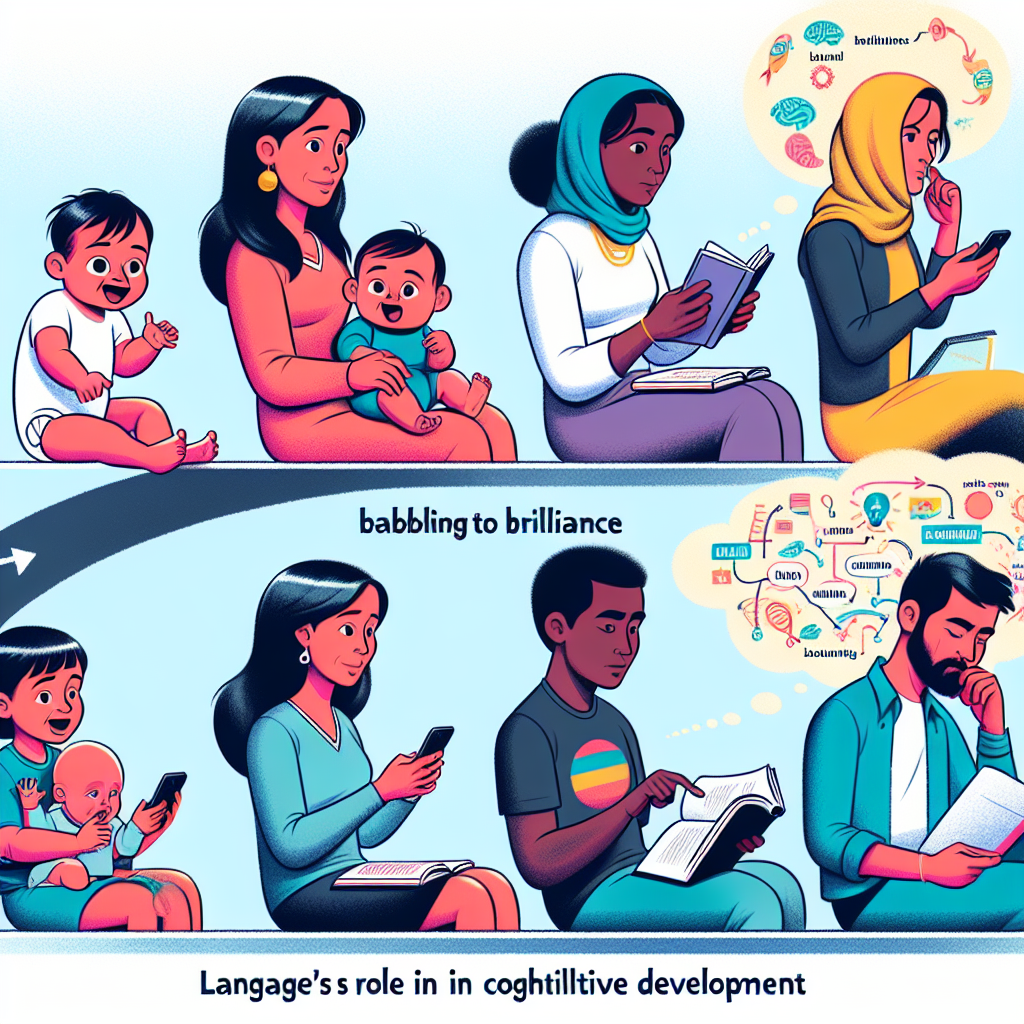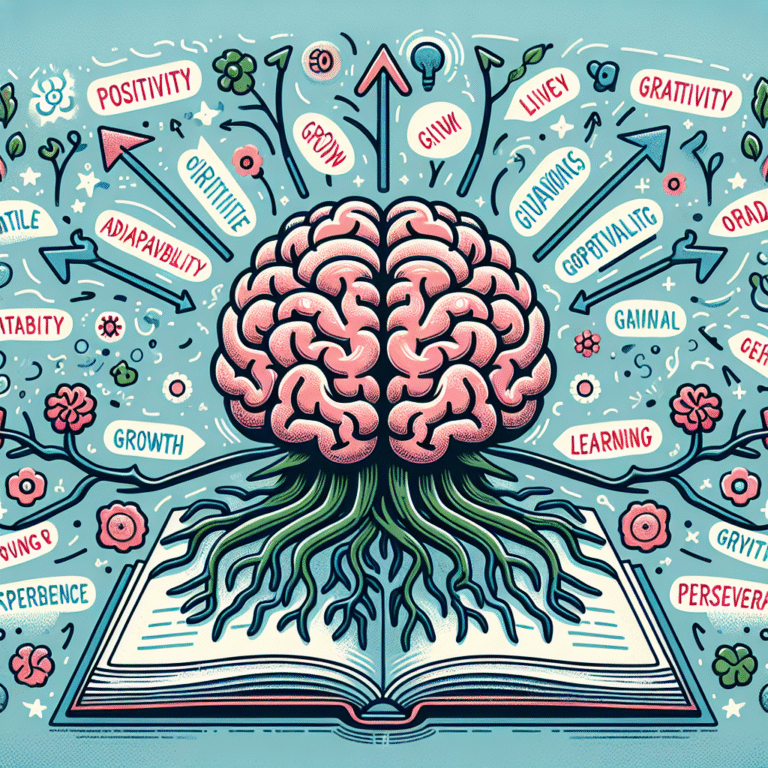
Introduction
Imagine a world devoid of language — a world where ideas, emotions, and thoughts remain trapped within the mind. Language is not just a tool for communication; it is an essential catalyst in the journey of cognitive development. The transition from the innocent babbling of infants to articulate expressions of brilliance is a profound journey that shapes our understanding, relationships, and identities. In this exploration, we will delve deep into From Babbling to Brilliance: Language’s Role in Cognitive Development, examining how language influences cognitive growth and how it enables children to navigate the complexities of life.
The Foundation of Language Acquisition
The Stages of Language Development
Language development occurs in several distinctive stages, each integral to cognitive growth. Let’s break down these stages:
- Cooing (0-6 months): Initially, sounds are random and lack meaning. This stage lays the groundwork for later language skills.
- Babbling (6-12 months): Babies start using consonant-vowel combinations, like "ba," "da," or "ma." This babbling is crucial for practicing sound and rhythm.
- One-word Stage (12-18 months): Children begin to use single words to convey meaning. For instance, "milk" may signify a desire for a drink.
- Two-word Stage (18-24 months): Here, children start combining words. "Want cookie" can indicate a request, showcasing their developing cognitive skills.
- Telegraphic Speech (24-30 months): Simple yet effective, phrases like "more juice" denote an understanding of sentence structure.
- Complex Sentences (30+ months): Children begin forming intricate sentences, reflecting their growing understanding of grammar and vocabulary.
Language as Cognitive Currency
The progression from babbling to coherent speech is akin to acquiring currency in a complex economy. The richer the vocabulary, the greater the cognitive purchasing power. Research supports the idea that a stronger linguistic foundation correlates with better problem-solving skills, memory, and reasoning abilities.
Case Study: The Hart-Risley Study
One landmark study by Betty Hart and Todd Risley in the late 1980s examined the language environment of children from different socio-economic backgrounds. They discovered that children from higher-income families heard approximately 30 million more words by the age of three than children from lower-income families. This disparity not only affected vocabulary but also influenced cognitive abilities and academic success later on.
Analysis: This study is essential in understanding the impact of language exposure. It highlights the importance of early language interaction for cognitive development, an insight critical for educators and parents alike.
The Role of Parent-Child Interaction
Quality Over Quantity
While the quantity of words matters, the quality of interactions is equally important. Engaging conversations, open-ended questions, and responsive listening significantly enhance a child’s linguistic and cognitive skills.
The Power of Storytelling
Storytelling plays a pivotal role in cognitive development. It not only expands vocabulary but also reinforces the structure of language and nurtures imagination and creativity.
Case Study: A Study on Storytelling
A 2015 research project by Jones and colleagues found that children who engaged regularly in storytelling activities showed higher levels of empathy and social understanding by age five compared to their peers who had limited exposure.
Analysis: The implications are clear — storytelling fosters not just language development, but also emotional and social growth, illustrating the multifaceted benefits of language on cognitive development.
Table 1: The Impact of Parent-Child Interaction on Language Acquisition
| Interaction Type | Estimated Vocabulary Size by Age 3 | Cognitive Skills Developed |
|---|---|---|
| High-quality conversations | 1,500+ words | Problem-solving, reasoning |
| Limited interaction | 500-1,000 words | Basic comprehension |
| Storytelling | 1,800+ words | Empathy, social skills |
The Neuroscience of Language and Cognition
Brain Development and Language
The relationship between language and brain development is profound. Neuroplasticity, the brain’s ability to reorganize itself, allows for continuous growth and adaptation based on linguistic exposure.
Critical Periods in Language Acquisition
Research indicates that certain periods in childhood are critical for language acquisition. During these times, the brain is particularly receptive to linguistic input, making it essential for caregivers to engage children linguistically.
Case Study: The Genie Case
One of the most famous cases in language acquisition is that of Genie, a girl who was isolated for much of her life. Although she learned some language in her later years, she never achieved full fluency, reinforcing the idea of critical periods in language development.
Analysis: Genie’s case illustrates the importance of early exposure to language, providing insights into the irreversible impacts of deprivation on cognitive and linguistic growth.
Language’s Influence on Thought and Perception
The Sapir-Whorf Hypothesis
Language fundamentally shapes how we think and perceive the world, a concept popularized by the Sapir-Whorf hypothesis. The way we articulate thoughts often dictates our cognitive processes.
Cognitive Linguistics
Cognitive linguistics posits that language is not merely a tool for communication but a framework through which we organize our thoughts and experiences. The vocabulary we possess can influence our cognitive structures and, by extension, our behaviors.
Case Study: Color Perception Across Languages
A study by Kay and Kempton (1984) showed that speakers of languages that have multiple words for colors perceive colors differently than those who do not. This supports the argument that language intricately intertwines with cognition.
Analysis: This example underscores the profound role of language in shaping perception and understanding, illuminating the critical relationship between linguistic exposure and cognitive development.
Multilingualism and Cognitive Flexibility
The Benefits of Being Bilingual
Research consistently indicates that bilingual children exhibit enhanced cognitive flexibility, problem-solving abilities, and creativity compared to their monolingual peers.
Case Study: The Bilingual Advantage
A meta-analysis of over 100 studies by Bialystok found that bilingual children displayed superior executive control — the cognitive skills necessary for tasks that require attention and inhibition.
Analysis: This suggests that language acquisition, particularly in multiple languages, can significantly enhance cognitive skills, further emphasizing the relevance of From Babbling to Brilliance: Language’s Role in Cognitive Development.
Table 2: Cognitive Skills in Bilingual vs. Monolingual Children
| Skill | Bilingual Children | Monolingual Children |
|---|---|---|
| Executive Control | Superior | Standard |
| Problem-solving ability | Enhanced | Average |
| Creativity | Higher | Conventional |
Language in Education
The Educational Landscape
Integrating language development into educational systems is essential for fostering cognitive growth. The effectiveness of language-rich curricula can be a game-changer for children’s cognitive development.
Approaches to Language Learning
From interactive reading programs to immersive language experiences, educators are recognizing the value of fostering an environment rich in language exposure.
Case Study: Head Start Program
The Head Start Program in the U.S. provides comprehensive early childhood education and emphasizes language and literacy development. Research shows that children who participate in Head Start exhibit significant gains in language and cognitive skills compared to their non-participating peers.
Analysis: This program highlights the importance of structured linguistic exposure in enhancing children’s cognitive abilities, further supporting the theme of From Babbling to Brilliance: Language’s Role in Cognitive Development.
The Connection Between Language and Emotional Intelligence
Language as an Emotional Connector
Language is not only a means of communication but a tool for expressing emotions, regulating feelings, and developing empathy.
Developing Emotional Literacy
Children equipped with strong language skills can articulate their feelings better, leading to improved emotional regulation and interpersonal relationships.
Case Study: The Emotional Vocabulary Project
Research by Durlak et al. (2011) demonstrated that programs focusing on emotional literacy significantly improved children’s social skills and reduced behavioral problems.
Analysis: This case study reinforces the idea that language has a vital role in emotional and social development, illustrating a key component of From Babbling to Brilliance: Language’s Role in Cognitive Development.
Table 3: Emotional Literacy and Its Impact
| Focus Area | Children with Strong Emotional Literacy | Children with Limited Emotional Literacy |
|---|---|---|
| Social Skills | High | Low |
| Conflict Resolution | Effective | Poor |
| Empathy | Elevated | Basic |
Conclusion
The journey from babbling to brilliance is not merely a linguistic evolution; it is a holistic approach to cognitive development, fostering critical thinking, emotional intelligence, and social skills. The insights gleaned from this exploration emphasize the necessity of early and rich language interaction for optimal cognitive growth.
As caregivers, educators, and society at large, we have the power to influence this journey positively. By prioritizing language-rich experiences, we can plant the seeds of brilliance in the minds of our children.
Takeaway
To nurture the next generation towards brilliance, immerse them in language. Read to them, engage them in conversations, and promote storytelling. Celebrate the beautiful journey of language development, knowing it plays a pivotal role in shaping not just individuals but society.
FAQs
What is the significance of babbling in infants?
Babbling is crucial for babies as it helps them practice the mechanics of language, setting the foundation for later speech development.How can parents promote language development at home?
Reading, storytelling, singing, and engaging in conversations with children are effective ways to promote language growth.What are the cognitive benefits of bilingualism?
Bilingual children often show enhanced cognitive flexibility, problem-solving skills, and creativity compared to monolingual peers.At what age do critical periods for language acquisition occur?
Critical periods are typically between birth and age five, during which the brain is most receptive to linguistic input.- How does storytelling influence cognitive development?
Storytelling enriches vocabulary, fosters imagination, and develops emotional intelligence, all of which are vital for cognitive growth.
Through this exploration, it becomes evident that the profound impact of language on our cognitive abilities is an exciting domain for further inquiry and application. Embracing this journey not only shapes individual lives, but also the future of communities and societies.















